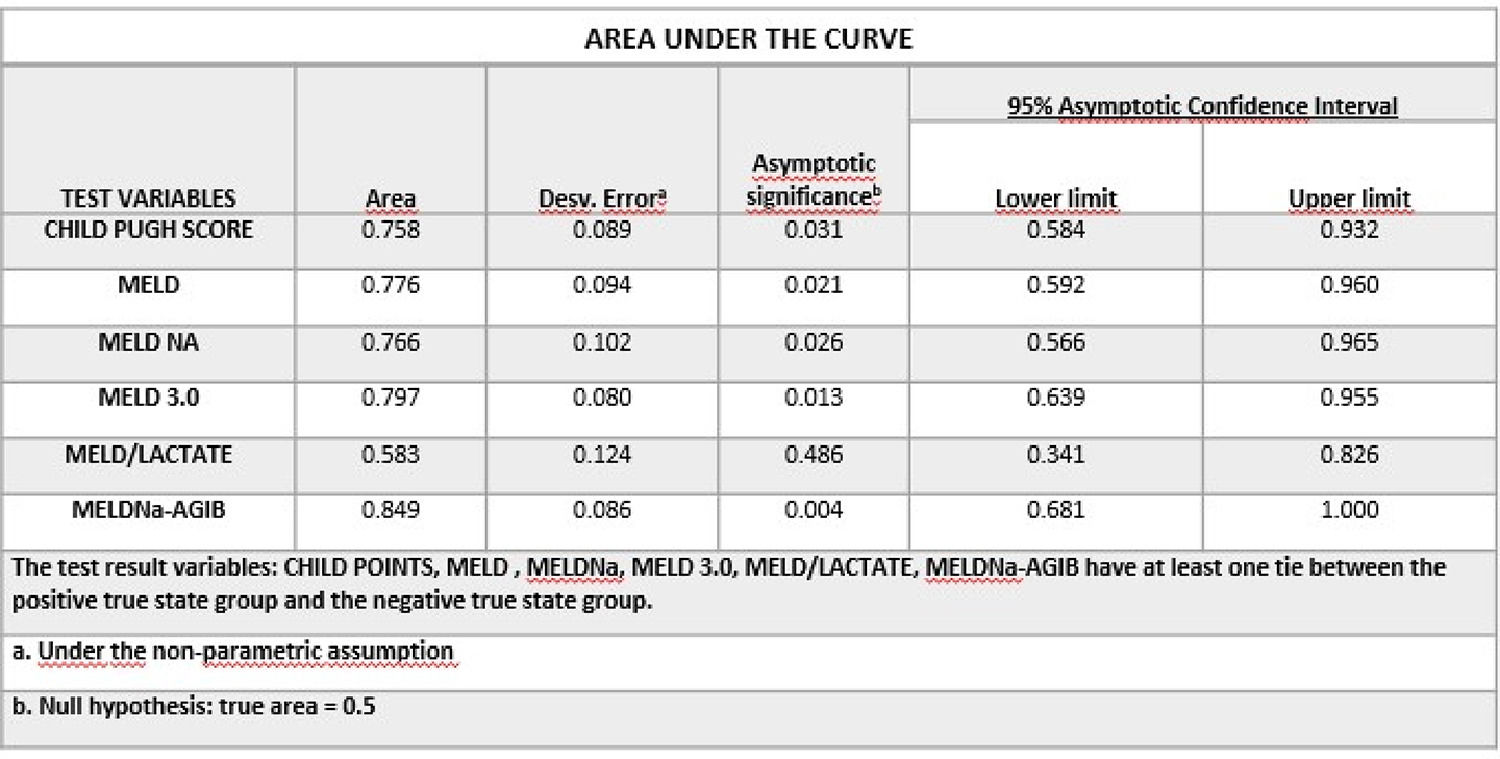
Abstracts Asociación Mexicana del Hígado (AMH) 2023
Más datosPatients with decompensated cirrhosis are at risk of variceal hemorrhage, which increases the risk of mortality. Validated scales exist to assess this risk, but there is currently no scale that evaluates the risk of variceal hemorrhage and death simultaneously. The MELDNa AGIB (acute gastrointestinal bleeding) scale incorporates sodium (Na) levels, albumin levels, the corrected QT interval (QTc), and a history of hemorrhage to calculate mortality at 6 weeks. While it has been evaluated in other centers, further studies are needed to validate its utility. To evaluate the MELDNa-AGIB scale for predicting the risk of mortality in decompensated cirrhotic patients.
Materials and PatientsThis was a retrospective, analytical, observational study conducted on a cohort of patients with decompensated cirrhosis and variceal hemorrhage. The MELDNAAGIB scale was calculated for each patient and compared with other scoring systems, including MELD, MELD NA, MELD LACTATE, and MELD 3.0, to assess its effectiveness. Statistical analysis involved the construction of ROC curves to determine the prognostic value of each scoring system in predicting mortality among patients with variceal bleeding. A significance level of p<0.05 was considered, and sensitivity and specificity were determined based on the cutoff points obtained from the significant ROC curves.
ResultsA total of 32 patients were included in the study, of whom 56.2% were male, with an average age of 57±11. The etiologies of cirrhosis included alcohol-related, metabolic-associated fatty liver disease (MAFLD), dual injury, hepatitis C virus (HCV), autoimmune hepatitis (AIH), and unidentified causes (34.37%, 31.25%, 21.87%, 6.25%, 3.12%, 3.12%, respectively). Fifty percent of the patients had a prolonged QTc interval (>456ms) as calculated using the Fridericia formula, and 67.2% had a history of previous variceal hemorrhage. The MELDNa-AGIB scale demonstrated an area under the receiver operating characteristic (AUROC) curve of 0.849 (95% confidence interval: 0.681-0.950, p=0.004), with a sensitivity of 87.5% and specificity of 83% when a cutoff point of 17 was applied for MELDNa-AGIB. The AUROC for predicting mortality was significantly lower for MELD/Lactate.
ConclusionsAlthough the study group was small, the MELDNaAGIB scale showed significant performance in predicting 6-week mortality in patients who developed variceal hemorrhage.
Ethical statement
The protocol was registered and approved by the Ethics Committee. The identity of the patients is protected. Consentment was obtained.
Declaration of interests
None
Funding
This research did not receive any specific grant from funding agencies in the public, commercial, or not-for-profit sectors.
Figure 1. Comparative analysis among different scales in patients with variceal hemorrhage and hepatic cirrhosis.













